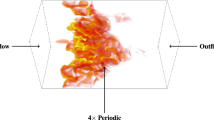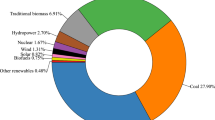Abstract
New combustors effectively abolish limits of flammability and extend the concept of what is a fuel. By burning very lean mixtures they also minimise pollution and irretrievable energy losses during conversion. The theoretical saving is more than double the proportion currently contributed by all nuclear and other ‘non-combustion’ sources.
This is a preview of subscription content, access via your institution
Access options
Subscribe to this journal
Receive 51 print issues and online access
$199.00 per year
only $3.90 per issue
Buy this article
- Purchase on SpringerLink
- Instant access to full article PDF
Prices may be subject to local taxes which are calculated during checkout
Similar content being viewed by others
References
Weinberg, F. J., Nature, 233, 239 (1971).
Weinberg, F. J., Plenary Lecture, 15th International Combustion Symposium, 1 (The Combustion Institute, Pittsburgh, 1975).
Lloyd, S. A., and Weinberg, F. J., Nature, 251, 47 (1974).
Smith, I. E., thesis, Univ. London (1955).
Hardesty, D. R., and Weinberg, F. J., Combust. Sci. Technol. (in the press).
Hardesty, D. R., and Weinberg, F. J., Combust. Sci. Technol., 8, 201 (1974).
Burgoyne, J. H., and Hirsch, H., Proc. R. Soc., A 227, 73 (1954).
Author information
Authors and Affiliations
Rights and permissions
About this article
Cite this article
Lloyd, S., Weinberg, F. Limits to energy release and utilisation from chemical fuels. Nature 257, 367–370 (1975). https://doi.org/10.1038/257367a0
Received:
Accepted:
Issue date:
DOI: https://doi.org/10.1038/257367a0



